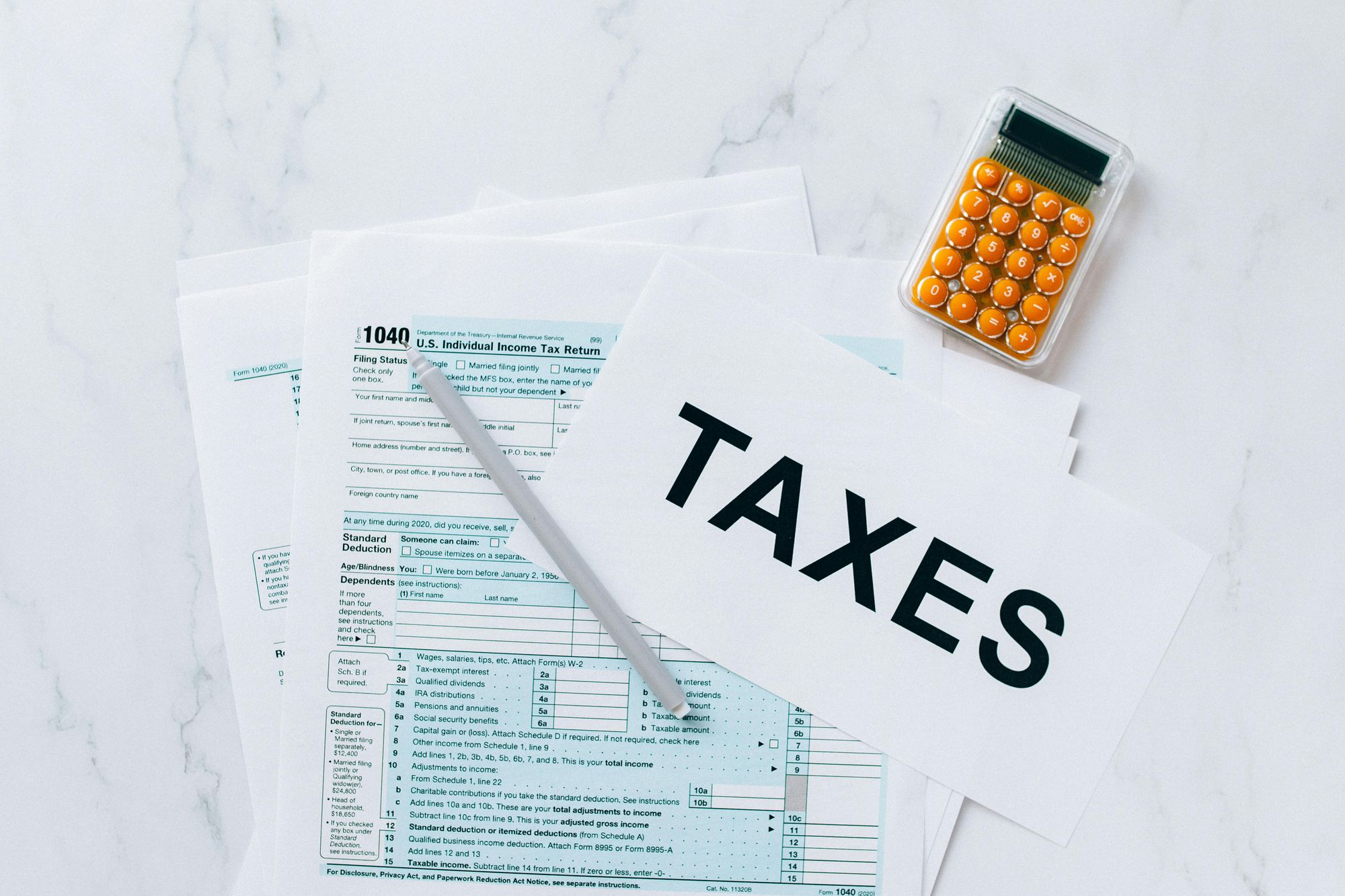Smart Strategies for Reducing Your 2024 Tax Bill
Proactive tax planning is an integral part of successful personal finance and tax savings.

As we swiftly navigate through 2023, it's crucial to turn our attention to the future, particularly our financial future. One significant aspect that often poses a challenge for many is tax planning. With the right strategies in place, you can substantially reduce your tax liabilities and save more of your hard-earned money. This is where our guide comes in, providing you with crucial 2024 tax planning advice.
In this article, we will explore various effective methods to cut down your tax bill. By understanding and implementing these strategies, you will not only become more financially savvy but also master the art of tax planning. From maximizing your retirement savings to making the most out of your investment losses, our aim is to equip you with the knowledge to make informed decisions.
Embark on this journey with us as we delve into the world of taxes and discover how to keep more money in your pocket in 2024.

Building Your Retirement Savings
As we march into the future, one of the most effective Tax-saving strategies is bolstering your retirement savings. A robust retirement plan not only ensures a comfortable and worry-free post-work life but also provides substantial tax benefits.
Investing in retirement savings accounts like 401(k)s or Individual Retirement Accounts (IRAs) can significantly reduce your taxable income. Traditional 401(k)s and IRAs permit you to contribute pre-tax dollars, thereby lowering your overall taxable income for the year. The money you invest grows tax-deferred until you begin to withdraw it in retirement.
For 2023, the IRS allows you to contribute up to $20,500 to your 401(k), and if you're age 50 or older, you can make an additional catch-up contribution of $6,500. For IRAs, the contribution limit is $6,000, with an additional catch-up contribution of $1,000 for those aged 50 or older.
Moreover, if your employer offers a match on your 401(k) contributions, try to contribute at least enough to get the full match. This is essentially free money that also grows tax-deferred, bolstering your savings even more.
Roth 401(k)s and Roth IRAs are also viable options, especially for those who anticipate being in a higher tax bracket in the future. Although contributions to these accounts are made with after-tax dollars, withdrawals in retirement are tax-free.
Besides these traditional methods, Health Savings Accounts (HSAs) and Flexible Spending Accounts (FSAs) also offer tax advantages and can be a part of your retirement tax-saving strategy.
Remember, the sooner you start investing in your retirement, the more time your money has to grow. So, make it a point to review your retirement savings plan as part of your 2024 tax planning.
Investing in your retirement is not just planning for a secure future; it's also one of the smartest tax-saving strategies for 2024.

Making the Most of Investment Losses
In the world of finance, it's not uncommon to experience both wins and losses. However, did you know that your investment losses can actually serve as effective cutting tax expenses hacks? This strategy, commonly known as tax-loss harvesting, can considerably reduce your tax liabilities.
Simply put, tax-loss harvesting involves selling securities at a loss to offset a capital gains tax liability. The Internal Revenue Service (IRS) allows you to use your investment losses to offset your investment gains. For instance, if you've sold stocks at a profit and thus have a capital gain, you can sell other stocks at a loss to neutralize the gain.
Furthermore, if your investment losses exceed your investment gains, you can use the surplus loss to offset up to $3,000 of other income. In the case of married couples filing separately, the offset limit is $1,500 per person. If your losses are still greater, you can carry them forward to future tax years.
While this may seem like a silver lining during a market downturn, it's important to tread cautiously. Make sure to consider the investment's future prospects before selling. After all, staying invested in a potentially profitable stock could outweigh the tax benefits of selling it at a loss.
In conclusion, although no one likes to see their investments lose value, these losses could potentially serve as effective cutting tax expenses hacks. It's all about understanding and making the most of the tax rules at your disposal.
The Power of Charitable Giving
Charitable giving is not just an act of kindness; it's also one of the most powerful financial tips for lower taxes. Not only can it provide a sense of personal satisfaction, but it can also offer significant tax benefits.
The IRS allows taxpayers to deduct charitable contributions made to qualified organizations, thereby reducing their taxable income. For those who itemize deductions, you can deduct up to 60% of your adjusted gross income for cash donations. If your contributions exceed these limits, you can carry forward the excess for up to five years.
Moreover, the contribution of appreciated securities, like stocks or mutual funds, to a charity can also provide additional tax benefits. You can deduct the market value of the securities on the date of the gift, and avoid paying capital gains tax on the appreciation.
However, in order to claim a deduction, you'll need to make sure that the organization you're donating to is a qualified organization per the IRS standards. You'll also need to keep a record of all the contributions made throughout the year.
Remember, not all charitable contributions are tax-deductible. For instance, donations made to political organizations, candidates, or groups that are not recognized by the IRS do not qualify for a tax deduction.
In conclusion, charitable giving is a win-win situation — it helps those in need and can also significantly reduce your tax bill. So, as you plan your finances for 2024, consider incorporating charity into your plan; it's one of the most rewarding financial tips for lower taxes.

Family Loans as a Tax Strategy
When it comes to making smart tax decisions, borrowing from family members may not be the first strategy that comes to mind. However, family loans, if handled correctly, can provide significant tax benefits and savings.
Family loans are an excellent way to lend or borrow money among relatives without the stringent requirements of traditional bank loans. They offer flexibility, lower or even zero interest rates, and can be a useful tool for financial and estate planning.
For instance, parents can lend money to their children who are in a higher tax bracket. The children can then invest that money and pay the parents back over time with interest. This strategy can result in overall family tax savings, as the investment earnings are taxed at the parents' lower tax rate.
However, it's crucial to note that the IRS requires interest to be charged on family loans to avoid the gift tax. If the loan is interest-free or the interest is below the market rate, the IRS might consider it a gift and it may be subject to the gift tax. Therefore, it's essential to ensure that the loan is structured properly, with a written agreement and a reasonable interest rate.
In conclusion, while family loans can be a great way to support each other financially, they should also be considered as part of your smart tax decisions. With careful planning, they can be a beneficial tool for reducing the family's overall tax liability.
Going Green for Tax Reduction
In the quest to reduce your tax burden, have you considered going green? Believe it or not, adopting more energy-efficient practices can become a part of your minimize tax bill guide. The government often offers tax credits to incentivize individuals and businesses to make eco-friendly choices, making this a win-win strategy for your wallet and the environment.
One of the most notable tax credits is the Residential Energy Efficient Property Credit. This credit can cover up to 26% of the cost (including installation) of solar-powered systems, wind turbines, and geothermal heat pumps installed in your home. It's worth noting that there's no upper limit on the amount of the credit for solar, wind, and geothermal equipment.
Similarly, the Nonbusiness Energy Property Credit applies to energy-efficient improvements such as adding insulation, energy-efficient exterior windows, and energy-efficient heating and air conditioning systems.
Businesses can also benefit from the Business Energy Investment Tax Credit (ITC), which covers 30% of the cost of solar, wind, and fuel cell property, and 10% for geothermal, microturbines, and combined heat and power (CHP).
However, these credits are subject to specific conditions, and not all energy-efficient improvements qualify, so it's essential to do thorough research or consult with a tax professional.
In conclusion, by investing in green energy and making eco-friendly upgrades, you can reduce your energy costs, contribute to environmental conservation, and minimize your tax bill.

Taking Action Now
When it comes to personal finance and tax savings, proactive planning is key. Acting now can not only provide immediate benefits but also set you up for long-term financial success.
As we've seen, there are various strategies available to reduce your tax bill, from charitable giving and family loans to energy-efficient practices. However, these are not last-minute decisions. They require careful planning and consideration to ensure they align with your financial goals and circumstances.
Procrastinating on tax planning can lead to missed opportunities. For instance, you might miss the deadline for making tax-deductible contributions or making energy-efficient home improvements that could qualify for tax credits.
Moreover, acting now gives you the time to gather necessary documentation, understand the ever-evolving tax laws, and consult with a tax professional if needed. It allows you to make well-informed decisions, rather than rushing during the tax season.
In conclusion, proactive tax planning is an integral part of successful personal finance and tax savings. By taking action now, you can make strategic decisions that will help you minimize your tax bill, maximize your savings, and achieve your financial goals. Start planning today and reap the benefits tomorrow.
Smart tax planning involves various strategies, such as family loans and energy-efficient practices, that can significantly reduce your tax bill. Proactive planning is crucial in personal finance and tax savings. Acting now allows you to make informed decisions, avoid missed opportunities, and set the stage for long-term financial success.
